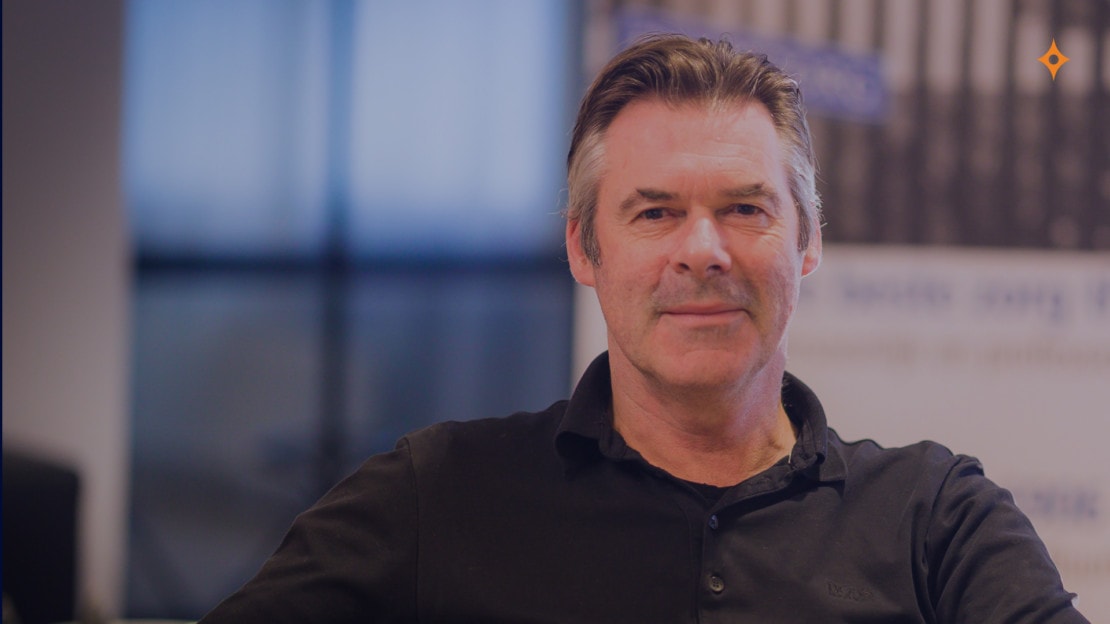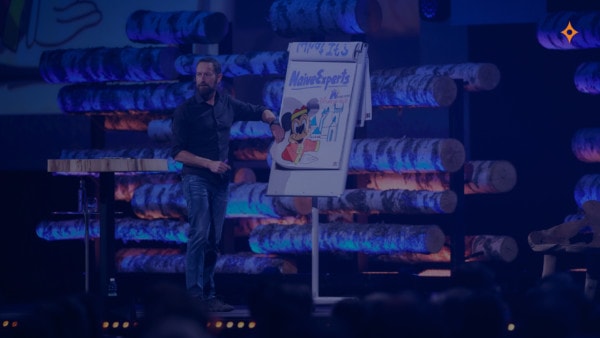6Apr2023
Jos de Blok is the founder and CEO of Buurtzorg, a Dutch organization that has transformed home-based healthcare and has created an innovative method for nursing care at home. Jos is leading an industry-wide change in the Netherlands, and therefore, we wanted to ask him more about innovation and creating change. We had a chat with him on the phone, and here is what we found out!
“Innovation is important because we need to stay connected to what is happening in society. We have to find solutions to the problems we face, and that’s changing all the time. I think about how we can improve services and how we can develop everything that is important to us.”
Innovation in Action
Types of Innovation
To begin with, we asked Jos to tell us about the situations in which he feels most creative and innovative. He quickly expanded his answer on the different types of innovation and what circumstances are most fruitful for them:
“A relaxed environment is incredibly important. But the environment should be different for different types of innovation. For innovation that deals with systems, for example, you need an environment where you can reflect on what’s happening in society, and what’s happening in the system you are aiming to innovate. You also need to think about what it might be in 10-15 years and have a long-term view.”
Innovations at Buurtzorg
He also pointed out the importance of including the right people. He gave us some concrete examples of innovation at Buurtzorg:
“In that environment, it is important to think about who should be involved in the innovation process. For example, with complex systems such as building our software, or dealing with more abstract integrations. Sometimes innovation is more concrete and based on everyday tasks, such as what our nurses face regularly. Those types of innovation often start very small. Let’s say a nurse discovers something, doing things differently, and it brings a lot more effectiveness or more satisfaction for the patients. An innovation to mention is the speech-to-text innovation. What we learned was that for some people, it’s easier to dictate than write, and another advantage is that speaking is much faster than writing. So, what we do is we ask the nurses to speak and record their inventions and notes. This innovation, which is markedly a technical innovation, saves about 10% of the nurse’s time, and that extra time can then be spent on the patients.”
Jos also told us about an interesting innovation in the Netherlands:
“The Olympic stadion race of the elderly. There was a lady who stated that there are competitions for everybody, but not for the elderly, so let’s create a competition. And after that, this competition was held in many other neighborhoods, villages, and cities. And now, thousands of people are involved, and it has become a national competition at the Olympic stadion in Amsterdam. It sounds very simple. What she did was think of an amazing innovation, so that thousands of people feel differently about their situation now. For example, the eldest participant in the last competition was 104 years old. So it gives people another feeling; it gives them the feeling that they can do something. And of course, the competition is quite funny also, and they are supported by their family members, by volunteers, by a lot of people around them, and give them another purpose in life.”
Conditions for Innovation
The Environment
We heard about some great examples of innovation that we might not always recognize as innovations. But how do you come up with these ideas? How can we help the people in our organizations to become more innovative? We asked these questions from Jos.
“One is that you trust them, that people will show themselves when they feel comfortable. Informal ways of working give people the feeling that they can be authentic, and if you can be yourself, then creativity comes easier. We don’t say, “now you’re going to innovate” or “now we put you in a group of innovators.” No, that doesn’t help. So we say, be yourself, and if you have a good idea, say it now, tell it to your colleagues, tell it to me or whoever you think it’s interesting to tell to. And then we say, okay, it’s a good idea, so try it someday. Just try to find out if it’s really leading to a good innovation. So first is the informal approach and giving space for this creativity. Then rewarding it, supporting it when it’s good.”
He continued on the topic of creating an environment that encourages innovation:
“Something that’s very concrete is creating an environment where every idea can lead to innovation. For example, start from a team, or from one nurse. If you have an environment with 10 000 nurses, who can share their ideas, what really helps is our platform. We did that so that people can share their ideas and can also get some reflection on these ideas. The teams where people are working, they can put it on the table and ask their colleagues for reflection.”
Creating a space where people can easily share ideas and are welcome to do so creates many benefits:
“I think that the feelings of honesty, that you can influence things, and have an impact on the lives of people, that invites people to speak out and share good ideas.”
Nurturing Innovation
Jos explained more about how innovation is nurtured at Buurtzorg:
“And what I just mentioned about being informal. The informal way of doing things. If you look at the steps and tools, then we are not very structured. We say that if you are too structured, it will lead to less creativity. But, of course, there are all kinds of environments where people can share things, discuss and reflect. Then, if most people think that it’s a good idea, we make a strategy on it so that many people can experiment with it. And then the next stage is, if everyone still thinks that it’s a good idea, then we implement it. So these are, for us, kind of the logical steps.”
Finally, he emphasized that innovations need to be purposeful and useful:
“But all the time, what we think is important is that people feel that it’s a useful thing to do. So, if you need to convince people that it’s a good thing to do, then I think it’s not a good innovation.”
Changing an Industry
Jos and Buurtzorg have been changing the healthcare industry in the Netherlands. We wondered how industry-wide innovation comes about, and took our question to Jos:
“What’s most important for me is that you see these things as a kind of transition. So, what I wanted to address is that we need system changes and system transitions. I’m working with stakeholders in the system, which can be, for example, the minister of health when it’s about health.”
Transition Management
Jos drives an electric car, and at this point, he had to stop to charge his vehicle. After it was nicely plugged in, we continued the call:
“At the beginning of Buurtzorg, I learned a lot about transition management. So I see that a transition is needed, I think, to change an industry. Because you have to deal with different paradigms. So my idea is that, if you really want to let people see that things can be different, then you have to deal with a lot of different interests. Because the existing world is, in a lot of places, not ready for the innovation. So you have to spend a lot of time talking with different kinds of stakeholders and explain the different advantages of the innovation.”
Jos stated before that if people need to be convinced that something is a good thing to do, it isn’t a good innovation. However, when it comes to large-scale innovation and change, this isn’t the case anymore:
“And for example, if you need a change in laws, then you have to deal with the ministry, the inspection, and different political entities. There are all kinds of system stakeholders, which need to be convinced that the innovation is important and useful. And then they can change laws and all kinds of regulations. Otherwise, this type of change in the system will not happen because the current regulations are made for the old way of working and not for the innovation.”
Long-term View
Convincing a large group of people that something new is better than something old takes a long time. Therefore, the larger the change or innovation you’re making is, the longer it will take to see the results:
“So this transition thinking and the way you do this kind of change is a circular process. Management gives you a lot of linear processes, and here it’s kind of unpredictable when you need to do something rare. All these things are happening for years. So it takes, for example, 3 to 5 years to change something. So you have to also have a long-term view of what you want to achieve. Otherwise, you’ll be disappointed and frustrated because people take time to understand what the innovation you bring to the system or industry is.”
Innovation in the Nordics
Our interview was wrapping up, and we had no questions left. However, Jos had one thing left to tell us:
“Especially for Scandinavia and for Finland, the conditions for change are very good in my opinion. Because of the history of the Nordic countries. Because I think that the history and the ideas of solidarity are very strong in the Nordic countries. And it helps a lot to support change in a direction that supports sustainable innovation. That’s what I’ve learned during the last, I think, 15 years when I’ve traveled a lot to Scandinavia and Finland. And I see very similar patterns in society.”
“So, for me, it’s always a pleasure to be in Finland.”
Btw, Jos de Blok will be speaking at Nordic Business Forum 2023 in September! The theme of this year’s event is Be:Change, and Jos will be talking about how to create a striving organization without administrative burden. Join us in Helsinki to learn from him and other great speakers such as Malala Yousafzai and Patrick Lencioni!

 by:
by: 
